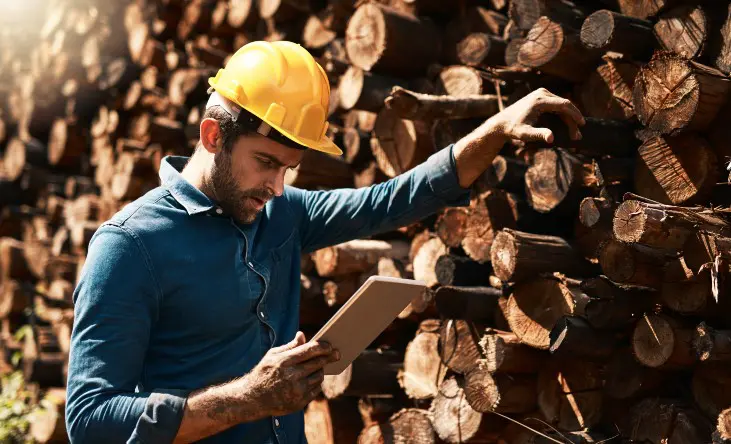SUSTAINABILITY| 10.06.2021
How can technology help achieve a circular economy?
The processes that will make this economic model possible will only be optimal and cost-effective if the latest technological advances are used.
In the last decade, the circular economy has started to be promoted as a more appropriate economic model to reduce pollutant emissions, reduce wasting resources and, as such, curb climate change.
Backed by the United Nations itself and with the commitment of the world’s major powers (China has come a long way, and the European Union has been working on such a model for a long time), the circular economy seeks “to stimulate economic growth and generate employment without jeopardizing the environment, positioning itself as a cornerstone for resilient, low-carbon economic recovery, following the COVID-19 pandemic,” as explained by the UN.
This will ensure that this is a revolution in the way the economy is designed, produced and consumed. This is based on eliminating waste and pollution, maintaining products and materials already in use, and regenerating natural systems.
Change of course
Achieving these goals is, however, no easy task, given that doing so involves changing the way things have been done for decades. In this respect, work must be done on two fronts: first, there is social awareness, the main stumbling block of which will be changing the mentality of millions of consumers around the world, especially in countries with higher economic levels; and second, in achieving the objectives set, as there are many steps to climb from the “plan” to its “implementation.”
For both challenges, technology is the main tool that must be used, as it is only through the most innovative advances that we will be able to reach the most people. More importantly, technology will lower the costs of procedures essential to the circular economy model, such as recycling.
Huge profits
The forecasts being published will be a great help in this transition; some suggest that 1.8 trillion euros could be generated in the EU by 2030. The returnable packaging market is also estimated to grow by 22 billion dollars in the period between 2018–2026. And that’s not all. According to the UN, up to 4.8 million jobs could be created in Latin America and the Caribbean, to give just one example of a region that would benefit.
This economic model would therefore not only bring about environmental improvements, but would be accompanied by good economic prospects. As explained by Manuel Maqueda, professor at UC Berkeley Extension’s Course on Circular Economics, in an article in the Spanish newspaper La Vanguardia, “The circular economy is more resilient to crises because circular business models allow for more diverse, sustainable, employment-intensive and recurrent forms of income.”
That being said, all will depend on technology playing a leading role.
No technology, no paradise
New technologies will be what makes the paradigm shift possible, as they provide the tools that are able to lower costs, automate tasks, and even create economic value.
Not in vain, specialists capable of implementing the new projects will be required. This will be a game-changer for many workers who have the right skills, and a new path for those who are currently being trained or for others who will do so in the coming years.

What technologies will be used?
The answer to this question is simple: those that are available today, from artificial intelligence to blockchain, to the Internet of Things, cybersecurity and Big Data.
Keys to global digitization, all of which will be used in the transition toward the circular economy. This is set out in the report titled “Creating a digital roadmap for a circular economy,” which states that they will be able to “improve connections and the exchange of information; make products, processes and services more circular; and influence and empower citizens and consumers.”
Only through these advances will achieving proper optimization of the different processes, enhancing their efficiency, increasing competitiveness and, above all, achieving improvements in both reuse and repair, and in remanufacturing and waste management, be possible.
The recycling cycle
If there is a key element in the circular economy, it is recycling, which is what makes reusing the materials consumed and used possible. In this regard, Frost & Sullivan has conducted an analysis titled “The Impact of Digital Transformation on the Waste Recycling Industry,” which analyzes how digitization and new technologies help this circular model.
The analysis shows some examples of this, making it very clear that technology and this economic paradigm must go hand in hand for it to be possible.
- The Internet of Things. This will be present in intelligent containers, robotic classification and mobile applications, combined with analysis tools and optimization software.
- RFID. Latest-generation sensors and RFID (Radio Frequency Identification) allow real-time data tracking.
- XaaS (Everything-as-a-Service). This is the technology-as-a-service model applied to innovative businesses for which there will be no need to invest in infrastructure.
- Client experience. The ability to focus on the client or consumer experience will become a reality, thereby obtaining better data on what the market is claiming and how recycling and reuse impact each user.
- Big Data and the Cloud. The integration of crowdsourcing models will foster greater demand for Big Data, which is essential for mass information analysis.
Ultimately, the idea behind these approaches is the need to incorporate technology into waste treatment. They are considered in the La Cátedra de Gestión de Residuos en la Economía Circular (Chair of Waste Management in Circular Economics), which in a recent article published that automated systems are being developed by applying Artificial Intelligence. “These systems partially replace human activity in classifying waste, relieving workers of loading materials that can often be heavy and relieving them of environmental conditions that aren’t great for their health due to the presence of dust, noise, dirt or contaminants,” they concluded.

